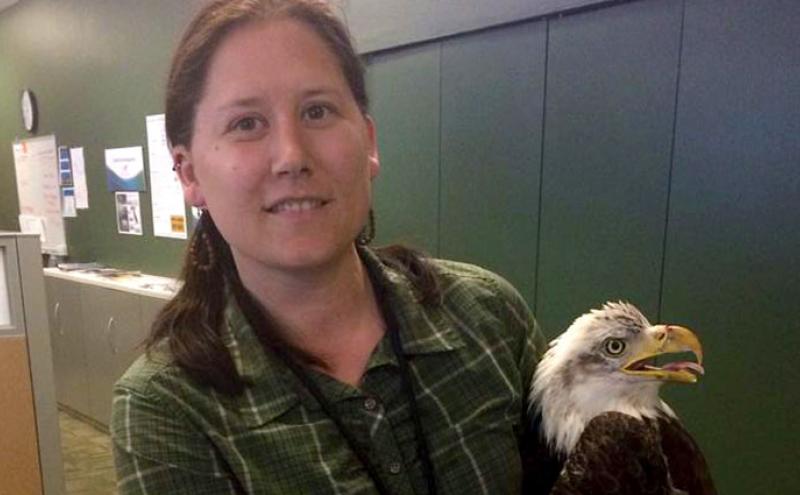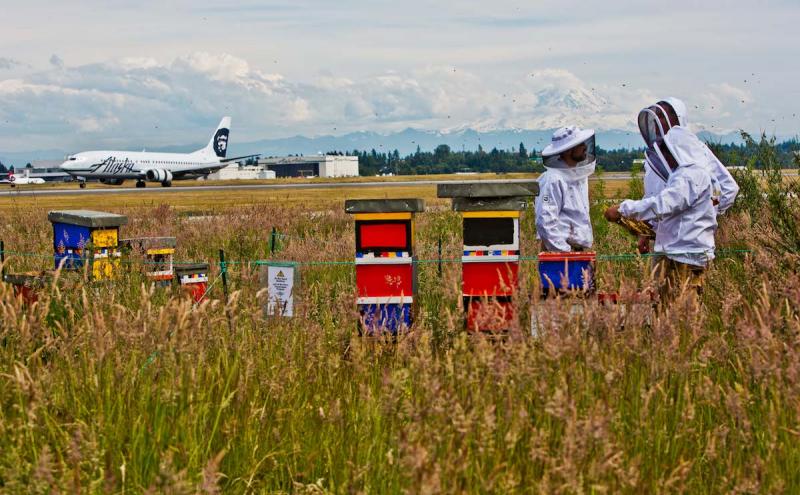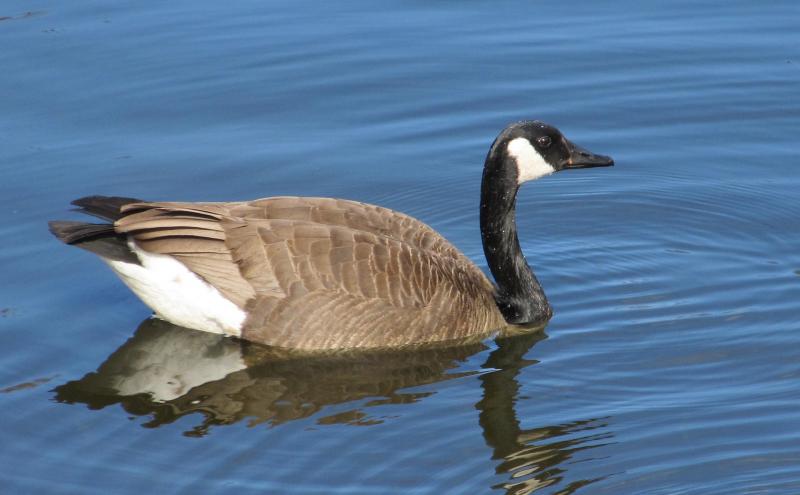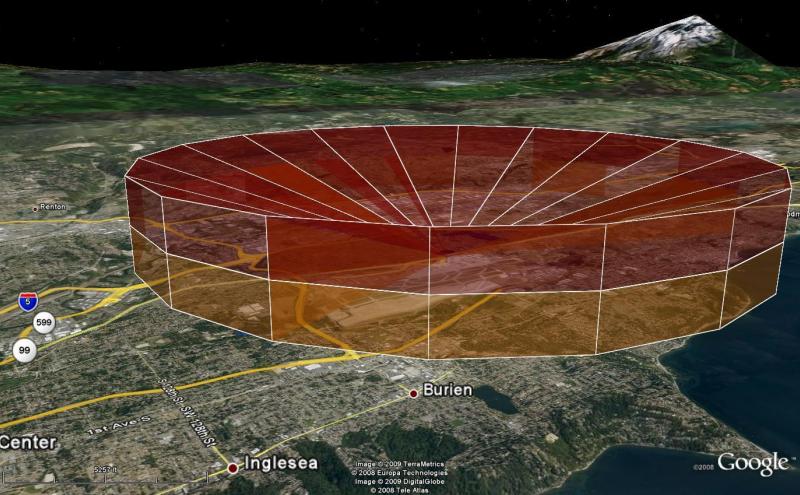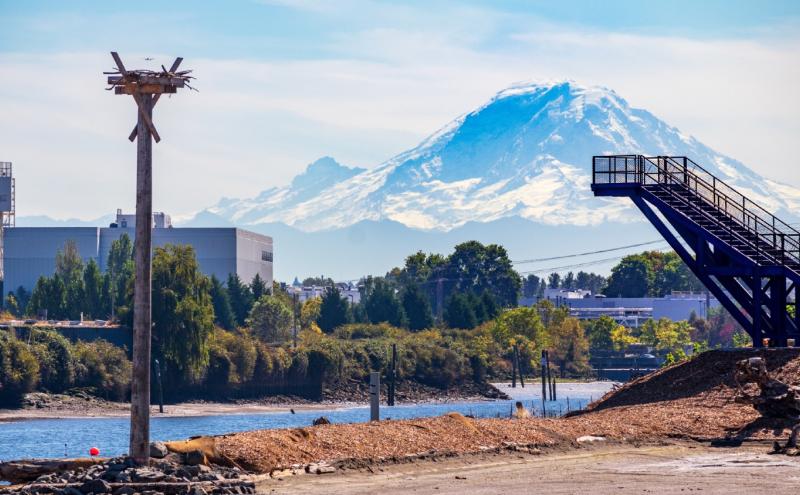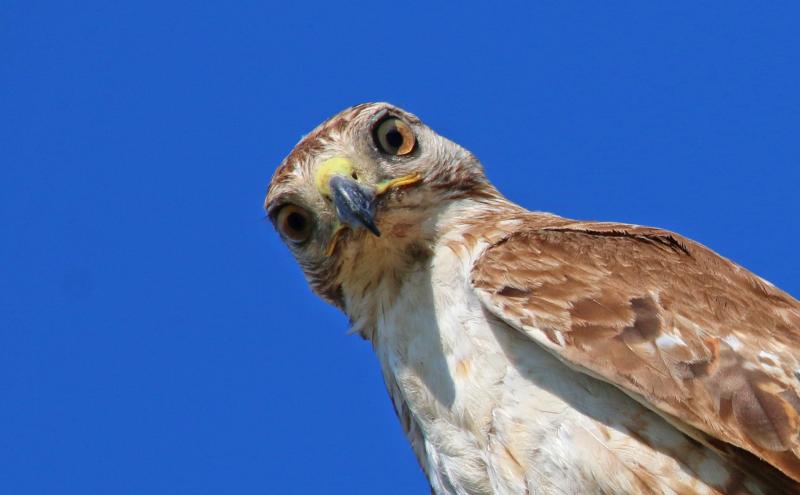
Like most airports, Sea-Tac has large tracts of open, improved land that provide an added buffer for both safety and noise mitigation … and an appealing home for animals. Wildlife and airplanes are a less than optimal combination, so Sea-Tac has a few strategies for keeping them separate and safe. A coyote deterrent fence around the perimeter of the airfield keeps most larger animals out, but birds are a bigger challenge as they can fly over the fence and get access to the airfield.
It may come as a surprise that the airport has a robust wildlife management program that plays a vital role in keeping passengers, facilities, employees, and wildlife safe.
Here are five things you may not have known about Sea-Tac’s wildlife program.
1. Sea-Tac has a full-time wildlife biologist on staff
In 1976, Sea-Tac was the first U.S. airport to employ a full-time biologist and to develop an ecological approach to maintaining aviation safety and protecting wildlife. It’s now become common for larger airports to have biologists on staff.
Sea-Tac has the oldest wildlife program in the country — celebrating our 40-year anniversary in 2016 — that keeps both animals and people safe by reducing the chance that the two never meet on the runway or in the air.
Meet the airport’s wildlife biologist.
2. Sea-Tac is a world leader when it comes to using technology to avoid bird strikes
Another first for Sea-Tac Airport in August 2007, when we became the first airport in the world to use avian radar in a long-term monitoring effort to detect potentially hazardous bird activity on and near an airport. The radar acts like a powerful pair of eyes that see much farther and higher than human observers, who are limited to viewing only during daylight hours.
3. Sea-Tac Airport traps and relocates birds of prey to keep them off the airfield
Through the Raptor Strike Avoidance Program, biologists trap birds of prey on the Sea-Tac airfield and safely relocate them to Skagit County. The program moves 100 birds a year and helps avoid bird strikes, which can be dangerous for aircraft, passengers, and birds. Red-tailed hawks are one of the largest species near the airport and we spend more time monitoring their hunting and breeding behavior than any other species at Sea-Tac.
In addition to relocation, staff also use a variety of (sanctioned) methods to ensure that birds don’t get too comfortable near the airfield: starter’s pistols, shooting firecrackers, and sounding an air horn.
4. Sea-Tac’s wildlife program also includes tracking down our furry friends
Occasionally, pets may wander onto airport property or become separated from owners in the terminal, and biologists work hard to return these pets to their worried owners. Dogs have escaped from faulty kennels on nearby Air Cargo Road and made their way through the coyote deterrent fence. Cats have slipped away from their owners and had to be retrieved from the terminal ceiling. A snare pole is an essential part of any airport wildlife biologist’s toolkit to help reunite these animals safely with their families.
5. There are bee hives at Sea-Tac Airport
Airports are abuzz with airplane takeoffs and landings and people rushing to make their way to their destination. Amidst that activity, Sea-Tac Airport is also home to a large colony of honey bees, an efficient and sustainable ecosystem that benefits the environment. As many as 36 bee hives filled with thriving honeybees are located in three different apiaries around the airfield.
The hives have been in place at Sea-Tac since 2013, when the Port of Seattle joined forces with local nonprofit The Common Acre to establish Flight Path, a project that has turned the unused green spaces on the south end of Sea-Tac into a native pollinator habitat — and in the process, produced a breed of bees better suited for survival in the coming years.

